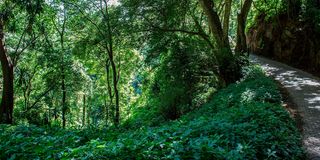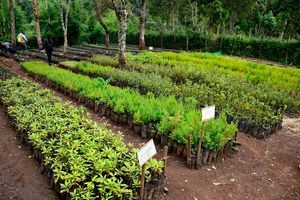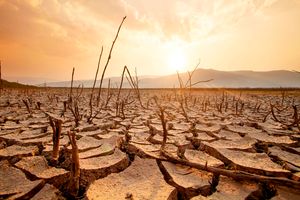
Situated adjacent to the Masai Mara National Reserve, the Nyekweri Forest is a precious natural resource.
This week, three notable events reminded us of our deep dependence on nature - and our responsibility to protect it. On May 22, the world observed the International Day for Biological Diversity under the theme Harmony with Nature and Sustainable Development - a timely reminder of the deep interdependence between people and planet. A day earlier, Global Forest Watch (GFW) released its latest 2024 data on tropical forests, revealing alarming rates of primary forest loss across key ecosystems.
Perhaps the most unlikely yet highly anticipated event was Pope Leo XIV’s inaugural Mass. Maybe because of the tumultuous times we live in, millions tuned in to listen, and be buoyed, by the new Pontiff.
I was particularly keen to hear his message on our stewardship of nature. In his homily, Pope Leo XIV urgently called for a shift from words to concrete actions to address the environmental crisis, emphasising the need to stop exploiting nature and marginalising the poor. He praised the Vatican’s own initiatives, such as installing solar panels and adopting electric vehicles, including the first all-electric Popemobile. His vision of a reciprocal relationship with the Earth, grounded in respect and stewardship, offered a powerful and hopeful call to action in these uncertain times.
These events offer a moment for reflection and a wake-up call. I am constantly struck by the intricate interconnectedness of the natural world in all we do. Each living organism plays a role. It is often unnoticed, yet always essential. The bee that pollinates flowers. The predator that regulates populations. The fungi that recycle fallen trees into rich soil. The sea kelp that produces oxygen and shelters marine life. This quiet choreography sustains life as we know it. Biodiversity is not a side story - it is the very foundation of human survival.
Continent’s green heart
Kenya is a testament to the richness of biodiversity. With over 25,000 species of animals and more than 7,000 species of plants, our landscapes form part of Earth’s most vital ecological tapestry. Yet even here, the signs of imbalance are growing louder.
This is not only about trees but also about our very survival - clean air, water security, food systems, and livelihoods. It’s about culture, identity, and livelihoods especially for Indigenous and forest-dwelling communities whose lives are rooted in the land.
Kenya is not alone in this crisis. Across Africa, forest loss is accelerating - particularly in the Congo Basin, which remains the continent’s green heart. In 2024, global forest loss reached its worst level on record, and Africa was not spare. Brazil experienced its highest primary tropical forest loss since 2016, driven by catastrophic fires and weakened protections.
A recent Nature journal study confirms that human activity - deforestation, industrial agriculture, pollution, and climate change - is driving widespread environmental pressures. In 2022, the World Economic Forum ranked biodiversity loss among the top three threats facing humanity over the next decade.
As the UN Convention on Biological Diversity reminds us, biodiversity is the foundation for achieving the Sustainable Development Goals and underpins our health, economic development, food and water security, and human rights. In short, this is not a “good to have,” it's a must have!
Some countries are proving that progress is possible. Indonesia saw a decrease in primary forest loss in 2024 thanks to consistent investment in fire prevention, forest monitoring, and restoration. Malaysia reduced its loss by 13 per cent.
Protecting biodiversity
And encouraging signs emerged from COP16 - the UN Biodiversity Conference held in Colombia and Italy. As the first meeting since the adoption of the Kunming-Montreal Global Biodiversity Framework, it marked critical breakthroughs: a new fund to share benefits from genetic resources, the creation of a permanent body for Indigenous Peoples and local communities, and long-term financing mechanisms to safeguard biodiversity beyond 2030.
These outcomes matter—but only if fully implemented. Indigenous knowledge and community-led conservation are essential to this mission. Here in Kenya, we’ve seen how community-managed forests, like those in the Loita Hills or Kakamega, can be powerful models for ecological stewardship and livelihood creation. Supporting these efforts with real capacity and resources is vital. Financing must reach those on the frontlines—so they can continue protecting ecosystems that benefit us all.
We also need to shift how we think about economic development. Investing in community-led forest economies is one of the most promising ways forward. These approaches protect nature while supporting livelihoods.
Global Biodiversity is a crucial part of our life support systems. We must, therefore, restore harmony with nature. We must first restore our sense of belonging to it because protecting biodiversity is not just about nature. It is about our own survival.
Ms Mathai is the MD for Africa & Global Partnerships at the World Resources Institute and Chair of the Wangari Maathai Foundation







